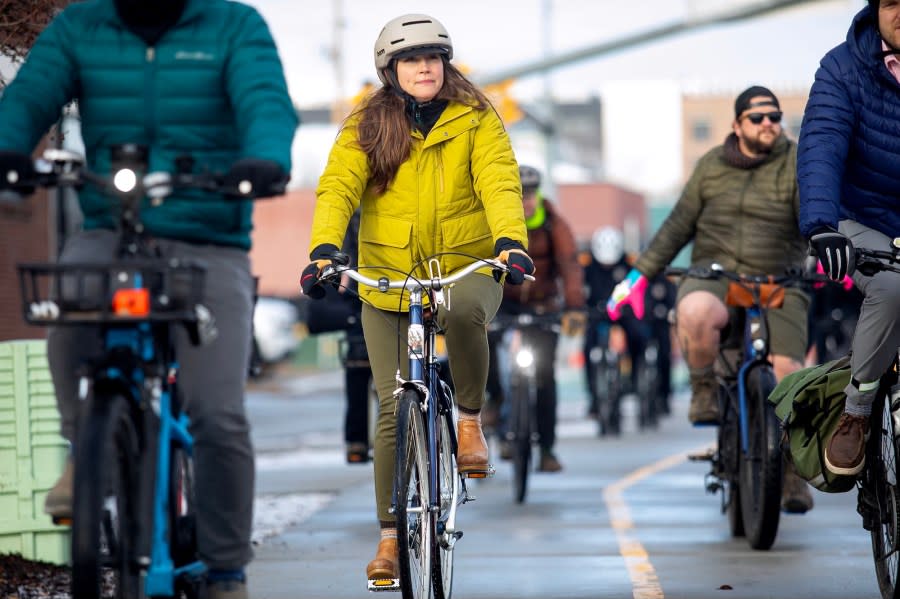A road rage incident in American Fork left a cyclist shaken. It’s part of a bigger issue of safety on Utah roads

SALT LAKE CITY (ABC4) — Tanner Bowman hasn’t gotten back on his bike since it happened. Five weeks ago, the seasoned cyclist says a driver ran him off the street and physically pushed him over in a road rage incident along the Wasatch Front.
“I’ve been trying to move on,” he told ABC4 News. “But I’m having a hard time getting the bravery up to go biking again.”
Murray police seek public help in fatal hit-and-run
Such a nerve-rattling encounter is something that cycling advocates say happens too often on Utah roads.
Meanwhile, public safety officials are working to better educate drivers, as hundreds of cyclists are struck on Utah roads each year, sometimes fatally.
‘It was terrifying’
The road rage incident happened on Jan. 18, when Bowman was riding to the Murdock Canal Trail near his home in American Fork. He turned off Alpine Highway near American Fork Junior High and took the full lane of traffic to avoid snow on the shoulder.
The cyclist only planned to take the full lane of traffic for a few seconds, but that’s when the driver behind him in a raised-up pickup truck started laying on his horn. Bowman responded by flipping him off, something he later regretted.
“After I do that, he swerves out after the on-coming traffic and rides me off the road,” Bowman said, adding that he couldn’t stop in time and so he collided with the back of the truck.
“He gets out of his car, sprints around to me, starts screaming at me … He then physically shoved me off my bike,” Bowman said.

Bowman called 911. According to records from American Fork police, the responding officer found no one was injured and no evidence that the bicycle and truck collided.
Per the report, the driver, identified as a 55-year-old American Fork man, got into a heated argument with the Bowman and admitted to shoving him.
The officer cited the driver for disorderly conduct, a misdemeanor. Court records show the driver paid a $160 fine.
Bowman questions why the driver wasn’t charged with assault. He described the experience as “terrifying,” especially considering the difference between a road bike and a “massive lifted truck.”
“I’ve never been physically assaulted by anyone. That was freaky,” Bowman said. “I’m still scared to go back out on a ride. It sucks, because we have great trails, a great system in Utah, but we got to ride through the streets to get to it.”
Biking in Utah
Cameron Carter, a planning and policy specialist with Bike Utah, said unpleasant encounters between cyclists and drivers are not uncommon on Utah roads.
“We hear a lot of stories where cyclists are regularly mistreated by drivers, whether it escalates to what you might call road rage or whether it’s just drivers who disregard bicyclists’ safety,” he said.
Jason Mettmann, a communications manager for the Utah Highway Safety Office, said there is an “alarming” number of crashes between cyclists and cars on Utah roads. He said the state averages between 450 and 500 bike-involved collisions each year.
“Motorists need remember that a bicyclist, like a pedestrian or a motorcycle rider, these are our most vulnerable users of the road,” he said, adding that his office is working to improve outreach education for drivers, especially new ones.

Mettmann noted that cyclists are legally allowed to use an entire lane of traffic, as Bowman did in American Fork. He said that roughly 40% of the crashes between cyclists and drivers involve motorists failing to yield.
“These failures to yield are all coming down to courtesy,” Mettmann said. “The bicyclist and the driver need to see each other and be courteous to each other.”
Making roads safer
These crashes and other negative encounters have a ripple effect through the communities, Carter said.
“Even if you haven’t been in an accident, there’s this perception out there that our roads aren’t safe for cyclists or even for pedestrians,” he said. “And that prevents people from walking or biking in their communities.”
Educating drivers and cyclists about road safety is part of the solution, Carter said, but it also falls on cities and local leaders to provide safer infrastructure. Lawmakers are among those pushing for changes.
One bipartisan bill before the legislature this session, HB449, would require that city planners and engineers consider bicyclist safety when designing or building new infrastructure, just as they are required to plan for pedestrians.
Other bills are also targeting road rage and other driver infractions, such as speeding in a school zone, increasing the penalties for motorists who break the law.
While Carter said increasing the punishment for problem drivers is helpful, he believes a bigger impact would come from building more protected bike lanes, grass medians and other cyclist-related infrastructure.
“The best path for increasing safety and reducing fatalities is changing the way our roads are designed, so drivers have to slow down and there’s less conflict between cyclists and drivers,” he said.
For the latest news, weather, sports, and streaming video, head to ABC4 Utah.

